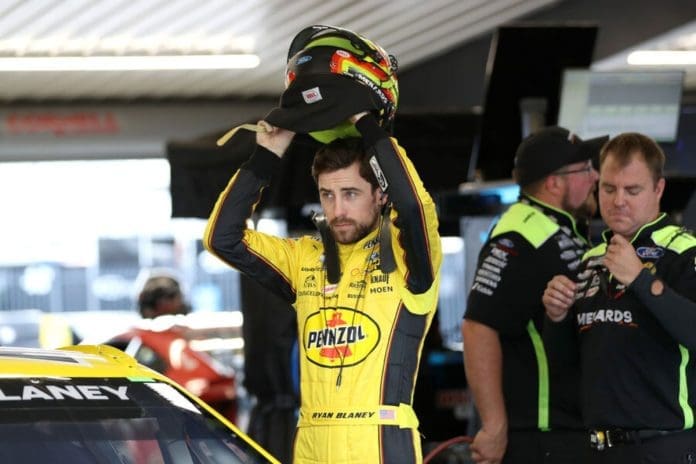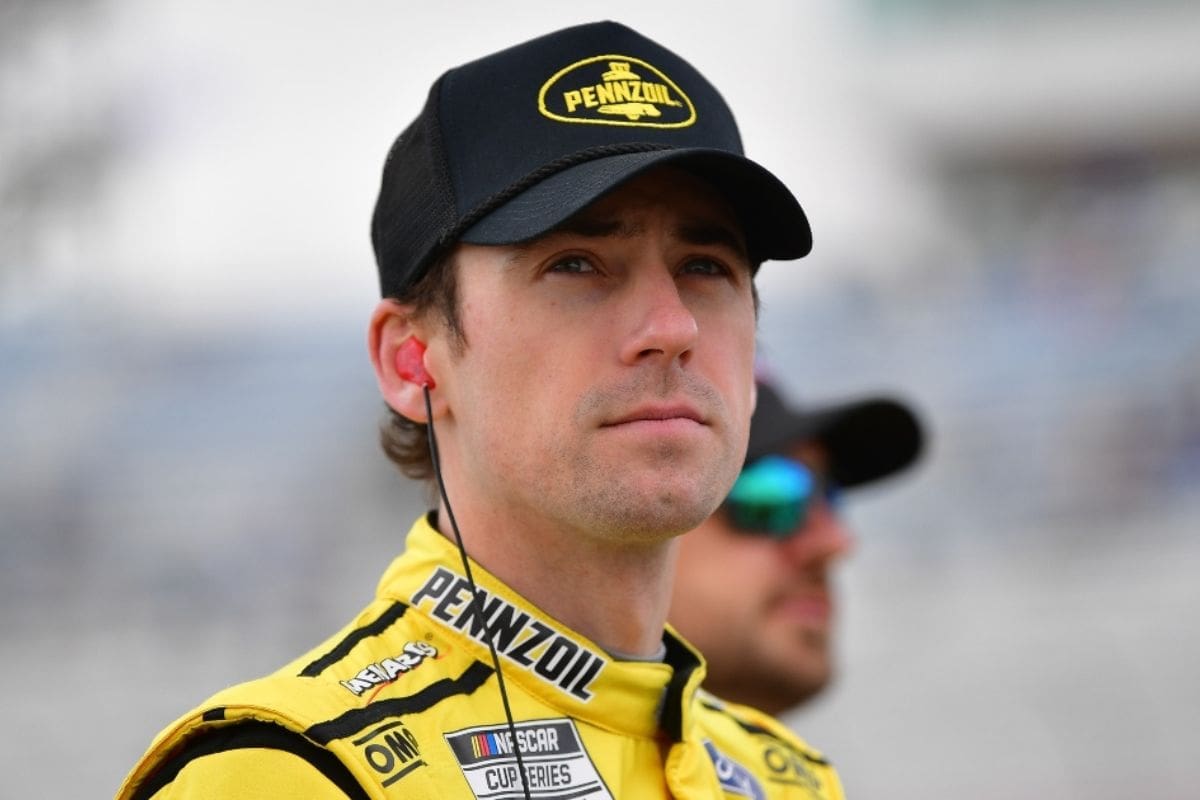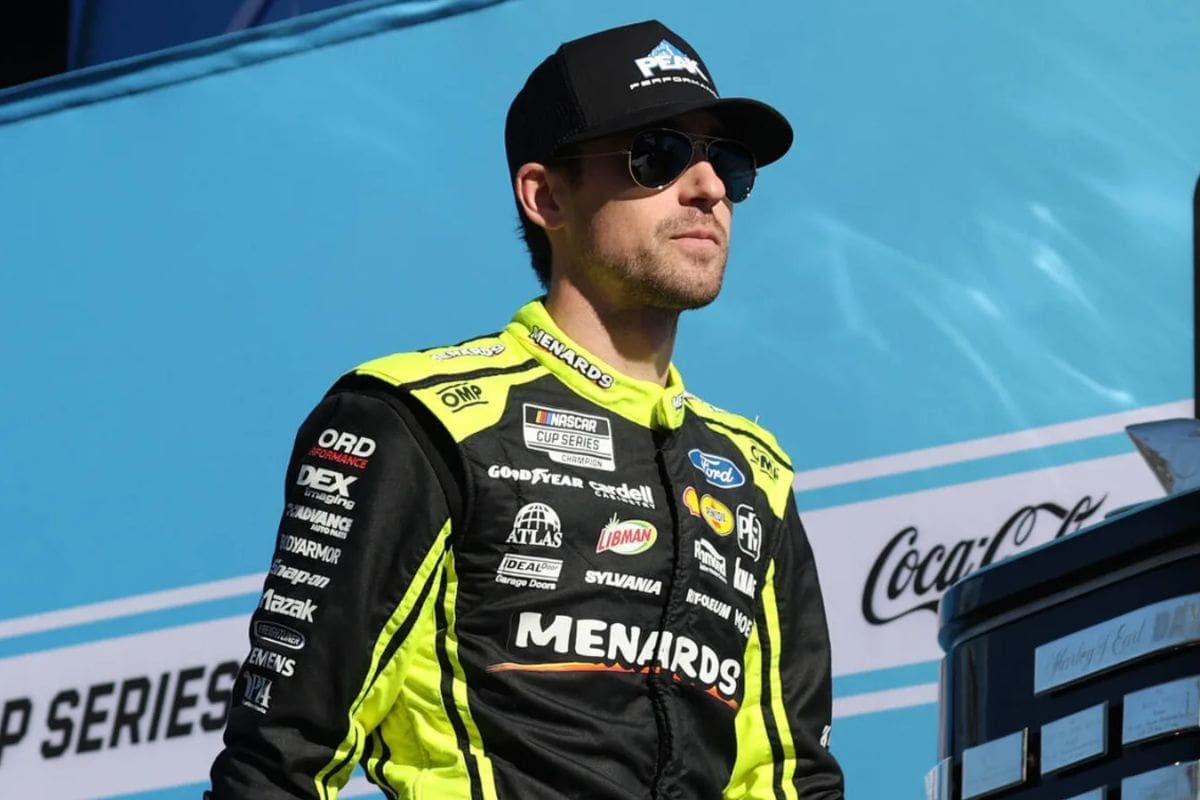Ryan Blaney Reveals Drivers Struggle: Ryan Blaney‘s distinctive skill in managing the ever-changing requirements of NASCAR racing, while smoothly switching between the fierce contender on the track and the friendly persona off it, provides an intriguing view into the dual aspect of professional drivers. This contrast highlights the intricacy and flexibility needed in motor sports, especially when contrasted with fellow drivers like Brad Keselowski. As Blaney gets ready for the upcoming Pocono race, his developing character raises thought-provoking inquiries about the mental toughness and public images of NASCAR athletes. What motivates these athletes to excel in such diverse roles?
Key Takeaways
- Ryan Blaney presents balancing intense competitiveness on the track with relatability off the track, showcasing dual personas effectively.
- Blaney’s ability to switch between his racing alter ego and his everyday self highlights the necessity of psychological transformation in high-stakes NASCAR.
- The emotional and strategic demands of racing require Blaney to maintain intense concentration and quick decision-making skills during races.
- Blaney’s recent challenges at Pocono underscore the importance of adaptability and mental resilience in overcoming setbacks.
- Connecting with fans through genuine interactions off the track helps Blaney cultivate a strong support base, enhancing his overall racing persona.
The Dual Personalities of NASCAR Drivers
NASCAR drivers often display dual personas on the track, balancing the intense competitive spirit needed for racing with the relatable, charismatic personas that engage their fanbase. This dynamic is intrinsic to the sport, where the high-stakes of each race necessitate a fierce, unyielding drive to push limits and boundaries. The racetrack becomes a crucible where the best and worst traits of drivers are forged and displayed, revealing a spectrum of human emotion and resolve that few other sports can parallel.
Unlike traditional ball-stick sports, NASCAR actively encourages its drivers to exhibit their characters and personalities. This emphasis on individuality creates a unique environment where fans can connect with drivers on a personal level, fostering a deeper sense of loyalty and admiration. The intensity of NASCAR racing demands a certain ruthlessness; drivers must navigate high-speed tactics, close-quarters competition, and split-second decision-making, all of which can bring out a raw, unfiltered edge.
However, it is precisely this combination of grit and human touch that adds to the allure of NASCAR. Fans are drawn not just to the speed and skill but to the stories and personas of the drivers. They witness moments of victory and tragedy, heroism and humility, all within the confines of a racetrack. This duality, where drivers can be both warriors on the track and approachable figures off it, creates a compelling narrative that keeps the audience engaged and invested.
Balancing Personalities On and Off the Track
Balancing the dichotomy between their on-track ferocity and off-track relatability, NASCAR drivers must skillfully harmonize their competitive instincts with their everyday personas to maintain both their professional edge and personal connections. This delicate balancing act requires a nuanced understanding of the demands of both the racing environment and their interactions outside the track.
For many drivers, it involves the cultivation of a dual personality—one that thrives under the intense stress of competition and another that engages with fans, sponsors, and media in a more approachable, affable manner.
The necessity for this duality is evident in how drivers conduct themselves amidst the adrenaline-fueled chaos of a race and the contrasting calm required during public engagements. On the track, a driver’s focus and aggression are paramount; split-second decisions can mean the difference between victory and defeat. Off the track, however, these same individuals are expected to be ambassadors of the sport, displaying humility, approachability, and often, a great sense of humor.
Ryan Blaney presents this balance, seamlessly shifting between his fierce competitiveness on the racetrack and his relatable, down-to-earth demeanor off it. His ability to navigate this contrast is not just a personal success but a blueprint for others in the sport. Blaney’s example highlights the importance of authenticity; while the intensity of racing demands a certain persona, maintaining genuine personal connections off the track fosters a strong fan base and a wholesome public image.
Ryan Blaney on Switching Characters Inside the Car
Ryan Blaney offers a compelling perspective on the psychological change that takes place when he enters his race car, describing it as an essential shift to meet the demands of high-stakes competition. The current NASCAR Cup Series champion highlights that this metamorphosis is not unique to him but is a common occurrence among his peers, fueled by the intense focus and competitive nature necessary in professional racing.
Blaney’s team radio transmissions paint a vivid image of his on-track persona. His communications reveal a driver deeply engaged in the race, often losing his composure in the heat of the moment, especially during conflicts with rival drivers. This heightened state of mind is a marked contrast to his off-track behavior, showcasing the dual nature inherent in his role as a NASCAR driver.
“Yes, I feel like a lot of drivers and athletes have like a bipolar, split personality or something, right? You are in job mode; you’re in competitive mode, right? So I am a completely different person behind the wheel. I don’t know why. I gotta learn how to turn it on and off, that’s for sure.” -(blaney)
To comprehend this change, consider these key points:
- Intense Concentration: Inside the car, drivers must maintain an exceptional level of focus, blocking out distractions to navigate high-speed actions.
- Emotional Control: The pressure of competition can result in heightened emotions, as evidenced in Blaney’s responses during conflicts, requiring a different emotional approach compared to everyday interactions.
- Tactical Thinking: Racing necessitates rapid, strategic decision-making, often under stress, pushing drivers to adopt a more assertive and tactical mindset.
- Physical Challenges: The physical strain of controlling a race car at high speeds demands a shift in physical and mental states, aligning the body and mind for optimal performance.
Blaney’s perspectives illuminate the intricate interplay between personal and professional personas in NASCAR, highlighting the transformative experience of entering the race car. This switch is essential for excelling in the fast-paced, competitive realm of motorsport.
Comparing Blaney to Brad Keselowski
Blaney’s reflections on his on-track persona mirror the sentiments of Brad Keselowski, who acknowledged the importance of embracing a dual persona to thrive in the competitive world of professional racing. Both drivers understand the contrast between their off-track selves and their racing alter egos, a phenomenon that is not only widespread but perhaps crucial in the high-stakes environment of NASCAR.
Ryan Blaney, in his open interview with TODAY, explored the psychological transformation he undergoes when he steps into the driver’s seat. He described a shift into ‘work mode‘ or ‘competitive mode,’ a state in which he becomes a ‘completely different individual.’ This transformation seems to be a coping mechanism to handle the intense pressures and demands of racing, and Blaney acknowledges the continuous challenge of switching between these personas effectively.
“I believe every great race car driver is bipolar. If you are the same person you are out of the racecar, you’re either a terrible person or you’re not a very good racecar driver. If I did stuff I did in the racecar outside the racecar, I would be in jail,”-(blaney)
Brad Keselowski echoed similar experiences, especially during his early racing career when he competed against giants like Jeff Gordon. Keselowski’s bold assertion that ‘every great race car driver is two-faced‘ emphasizes the importance of this duality. He stressed that maintaining the same persona off-track would make one either ‘a terrible person‘ or ‘not a very good racecar driver.’ This strong statement highlights the psychological adjustments drivers must make to handle the ruthless nature of the sport.
Keselowski’s analogy of potentially facing consequences if off-track behavior mirrored on-track aggression illustrates the extreme mental separation required to succeed.
Blaney’s Upcoming Race at Pocono
This weekend’s Cup race at Pocono presents an important opportunity for Ryan Blaney to use his competitive edge and reclaim his standing on a track that once marked his initial Cup Series victory. The Tricky Triangle, as Pocono is often referred to, holds a special place in Blaney’s career, having clinched his first Cup win there in 2017 with Wood Brothers Racing. However, recent outings at this venue have been less than stellar, with finishes of P33 and P30 in his last two starts.
Blaney’s performance this season has been a mixed bag, characterized by near-miss scenarios and moments of sheer bad luck. Despite securing a win at Iowa that guaranteed his spot in the playoffs, he narrowly missed victory at Atlanta and ran out of fuel with the win in sight at Gateway. These challenges highlight the importance of a strong showing this Sunday.
- Track History: Blaney’s familiarity with Pocono and his past success here could play a significant role in regaining momentum.
- Next Gen Car Adaptation: Overcoming the difficulties faced with the Next Gen car will be vital for a better finish.
- Team Strategy: Team Penske’s strategic adjustments could make the difference between a podium finish and another disappointing result.
- Ford Performance: The No. 12 Ford Mustang has shown promise this season, making Blaney a strong contender if the car performs at its best.
News in Brief: Ryan Blaney Reveals Drivers’ Struggle
The intricate equilibrium between on-course battle and off-course charm, as demonstrated by Ryan Blaney, emphasizes the diverse nature of NASCAR drivers’ personalities.
This dualism, which includes intense competitive drive paired with relatability and approachability, showcases the intricacy ingrained in the sport.
Blaney’s skillfulness in maneuvering these opposing roles not only heightens his attractiveness but also offers a more comprehensive insight into the psychological and social interactions that characterize NASCAR.
ALSO READ: Ryan Blaney’s Pit Crew Faces Big Shift Before Chicago NASCAR Race




